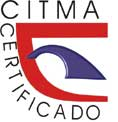Predicting nickel resources recoverable potential and their uncertainty in a sector of San Felipe deposit
Keywords:
recoverable resources, change of support, Gaussian Sequential SimulationAbstract
Estimation of recoverable resources is closely linked to mining selective and its primary objective is maximizing the profit from exploitation. Since estimation models inevitably suffer from the "softening" effect of the estimated law, they are inappropriate for predicting both the law and the tonnage of resources that could be recovered. Conversely, useful mineral law models obtained from applying geostatistical simulation efficiently reproduce global characteristics (texture), statistics (histogram) and spatial variability (variogram). Recoverable resource potential was predicted by applying sequential simulation method for 25m x 25m x 1m tonnage panel, metal quantity, mean grade and associated uncertainties, through a change of support and by applying several laws of cut in a small sector of San Felipe nickel deposit, chosen as a case study. In conclusion, changing the cut-off law over a given estimated medium has an effect on recoverable resources: as the cut-off law increases, tonnage and metal quantity decrease; conversely, the average nickel law increases, but uncertainty increases in all cases, due to the growth of average estimation errors associated with each of these parameters. .Downloads
References
Artica, C. (2023). Comparison of two quantitative mineral resource classification methods – a case study from a large copper porphyry-skarn deposit. Mineral Resource Estimation Conference 2023. Perth, Australia: The Australasian Institute of Mining and Metallurgy, pp. 166-178. Publication Series No 2/2023, ISBN 978-1-922395-14-6. Consultado: 17/02/2025. Disponible en: https://www.ausimm.com/publications/conference-proceedings/mineral-resource-estimation-conference-proceedings-2023/comparison-of-two-quantitative-mineral-resource-classification-methods--a-case-study-from-a-large-copper-porphyry-skarn-deposit/.
Chang-Rodríguez, A. y Rojas-Purón, A. L. (2018). Movilidad geoquímica y grado de meteorización del yacimiento San Felipe, Camagüey, Cuba. Minería y Geología, 34(2), 122-135. Consultado: 17/02/2025. Disponible en: https://www.redalyc.org/journal/2235/223554994001/html/.
Chica-Olmo, M. (1987). Análisis Geoestadístico en el Estudio de la Explotación de Recursos Minerales. (Tesis doctoral, España).
Cobas-Botey, R. M. (2017). Modelo geológico descriptivo de las lateritas ferroniquelíferas del depósito San Felipe, Camagüey, Cuba. (Tesis doctoral, Universidad de Moa).
Cobas-Botey, R. M., Formell-Cortina, F. Y., Leyva-Rodríguez, C. A. (2017). Modelo geológico descriptivo del yacimiento laterítico San Felipe, Camaguey, Cuba. Minería y Geología, 33(3), 251-265. Consultado: 17/02/2024. Disponible en: https://www.redalyc.org/journal/2235/223551846001/html/.
Deutsch, C. V. y Journel, A. G. (1998). GSLIB: Geostatistical Software Library and User’s Guide. S.l.: Oxford University Press. Applied geostatistics series, ISBN 978-0-19-510015-0. Consultado: 17/02/2025. Disponible en: https://books.google.com.cu/books?id=CNd6QgAACAAJ.
Gallardo, T., Chang, A., Tauler, E. Y Proenza, J. (2010). El yacimiento de San Felipe (Camagüey, Cuba): un ejemplo de lateritas niquelíferas tipo arcilla. Macla, 13, 87-88.
Kapageridis, I., Apostolikas, A. Y., Kamaris, G. (2021). Contact Profile Analysis of Resource Estimation Domains: A Case Study on a Laterite Nickel Deposit. Materials Proceedings, 5(1), 89. Consultado: 26/05/2025. Disponible en: https://www.mdpi.com/2673-4605/5/1/89.
Murphy, M., Parker, H., Ross, A. y AUDET, M. A. (2005). Ore-Thickness and Nickel Grade Resource Confidence at the Koniambo Nickel Laterite (A Conditional Simulation Voyage of Discovery). En: O. Leuangthong y C. V. Deutsch (eds.), Geostatistics Banff 2004. Dordrecht: Springer Netherlands, pp. 469-478. ISBN 978-1-4020-3610-1. Consultado: 17/02/2025. Disponible en: https://doi.org/10.1007/978-1-4020-3610-1_47.
Neufeld, C. y Leuangthong, O. (2005). The Calculation of Recoverable Reserves. Centre for Computational Geostatistics Department of Civil and Environmental Engineering University of Alberta, no. 301. Consultado: 26/05/2025. Disponible en: https://www.ccgalberta.com/ccgresources/report07/2005-301-recoverable_reserves.pdf.
Remy, N., Boucher, A. y Wu, J. (2009). Applied Geostatistics with SGeMS: A User’s Guide. Mathematical Geosciences, 41(3), 353-356. ISSN 1874-8953. DOI 10.1007/s11004-009-9217-5.
Remy, N., Boucher, A., Wu, J., Ting, L., Maharaja, A. y Gupta, R. (2011). SGeMS. C++. 1 septiembre 2011. S.l.: Advanced Resources & Risk Technology, LLC. Consultado: 26/05/2025. Disponible en: http://www.ar2tech.com.
Richmond, A. (2013). Conditional Simulation of a Nickel Laterite Deposit using Unfolding. APCOM 2013. S.l.: s.n., pp. 6. Consultado: 17/02/2024. Disponible en: https://martlet.com.au/wp-content/uploads/2020/08/2013_APCOM_Richmond_Conditional_Simulation_of_nickel_laterite_deposit_using_unfolding.pdf.
Rodríguez, C., Rivers, C., Parianos, J., Mwasinga, P., Potter, S. y Coombes, J. (2001). Mineral Resource Estimate of the San Felipe deposit. Technical Report. S.l.: bhpbillinton. 1966/009633/06. ONRM.
Rodríguez-Catalá, A. y Rodríguez-Infante, A. (2021). Sistema de fallas del yacimiento laterítico niquelífero San Felipe, Camagüey, Cuba. Minería y Geología, 37(2), 162-180. ISSN 1993-8012. Consultado: 28/02/2024. Disponible en: http://scielo.sld.cu/scielo.php?script=sci_abstract&pid=S1993-80122021000200162&lng=es&nrm=iso&tlng=es.
Rossi, M. E. y Deutsch, C. (2014). Mineral Resource Estimation. Springer Dordrecht Heidelberg New York London. ISBN 978-1-4020-5716-8. Consultado: 26/05/2025. Disponible en: www.springer.com.
Sinclair, A. J., & Blackwell, G. H. (2006). Applied mineral inventory estimation. Cambridge University Press.
Sterk, R., De Jong, K., Partington, G., Kerkvliet, S. y Van De Ven, M. (2019). Domaining in Mineral Resource Estimation: A Stock-Take of 2019 Common Practice. Kenex. 25 noviembre 2019. pp. 13. Consultado: 19/02/2025. Disponible en: https://kenex.com.au/company/publications/.
Webster, R. y Oliver, M. A. (2007). Cross-Validation. Geostatistics for Environmental Scientists. Second Edition. John Wiley & Sons. ISBN 978-0-470-02858-2. Consultado: 19/02/2025. Disponible en: www.wiley.com.
Yamamoto, J. K. (1999). Quantification of uncertainty in ore-reserve estimation: Applications to Chapada copper deposit, State of Goiás, Brazil. Natural Resources Research, 8(2), 153-163.
Published
How to Cite
Issue
Section
Copyright (c) 2025 Alain Carballo Peña

This work is licensed under a Creative Commons Attribution-NonCommercial 4.0 International License.
- Authors retain copyright and guaranteeing the right magazine to be the first publication of the work as licensed under a Creative Commons Attribution-NonCommercial that allows others to share the work with an acknowledgment of the work's authorship and initial publication in this journal.
- Authors may establish separate supplemental agreements for the exclusive distribution version of the work published in the journal (eg, place it in an institutional repository or publish it in a book), with an acknowledgment of its initial publication in this journal.
- Authors are allowed and recommended to disseminate their work through the Internet (e.g., in institutional telematic archives or on their websites) before and during the submission process, which can produce interesting exchanges and increase citations of the published work. (See The effect of open access)









